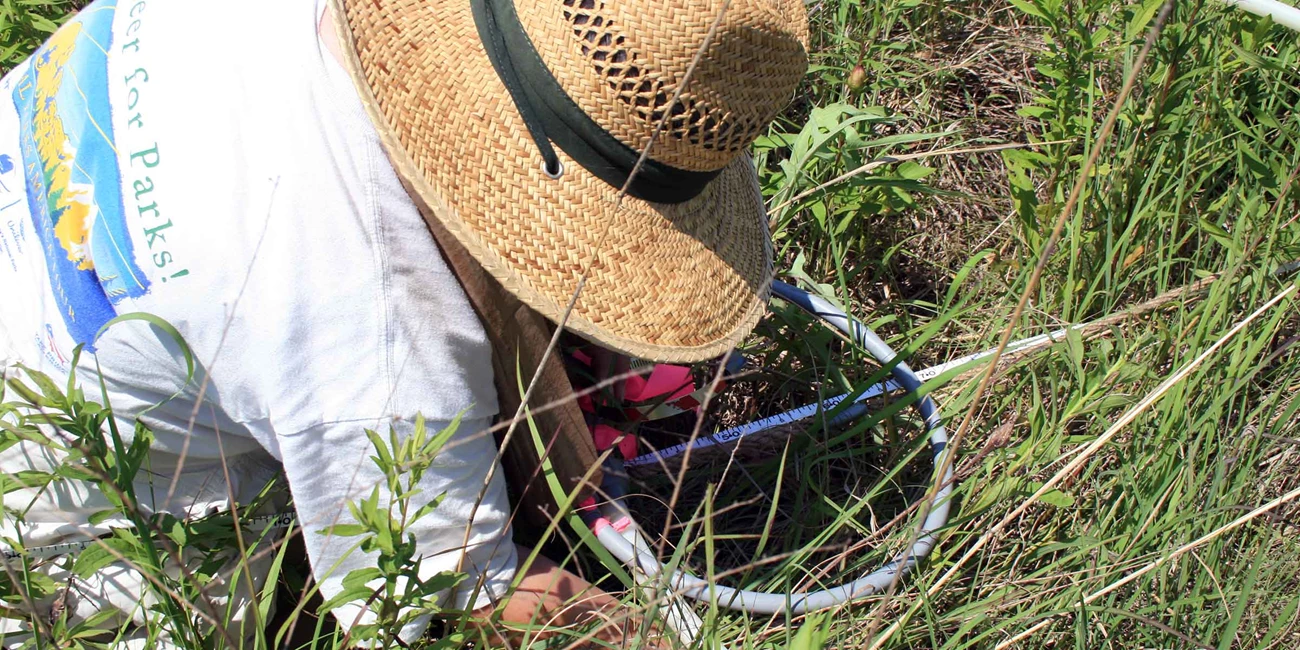Last updated: April 15, 2021
Article
Prairie Monitoring At Herbert Hoover National Historic Site

NPS Photo
Restoring Prairie As A Part Of History
Tallgrass prairie once dominated the Iowa countryside. Nineteenth century settlers wrote that a vast sea of waving grasses and colorful flowers spread from horizon to horizon. The invention of a moldboard plow to cut the deep prairie soils turned this sea of vegetation into the bread basket of America. Now, private and public land managers, such as the National Park Service (NPS), are restoring this rich plant community and a piece of our American heritage to the land. Herbert Hoover National Historic Site began prairie reconstruction in 1971, and continues to manage over 80 acres of prairie for the enjoyment of visitors and for the values this native plant community provides.
Achieving Goals Through Science
Plant community monitoring detects and quantifies changes in species diversity, composition and structure. Scientists have monitored the prairie at Herbert Hoover National Historic Site since 1982. The NPS Heartland Inventory and Monitoring Network sampled six paired transects to assess species frequency and foliar cover (area within the shadow of a plant). From this, they calculate indicators of plant community structure, richness and diversity to inform park managers of changes in community health. Managers can adapt their management priorities based on the needs of the prairie.
Status & Trends: Success
Because of the relatively small size of the reconstruction, managers recognized that they would be unlikely to achieve a functioning prairie ecosystem. Despite this, monitoring indicates that the prairie vegetation is functioning as a healthy plant community. Additionally, scientists made other observations:
- Native forbs and grasses are the most abundant plant type in the prairie for all three years.
- Although non-native species never exceeded a threshold of 10% of foliar cover, as with any restoration effort, invasive species must remain a high priority management issue.
